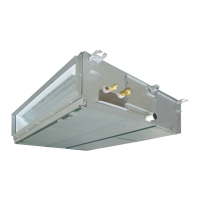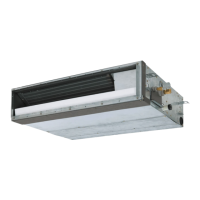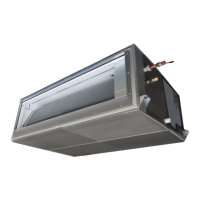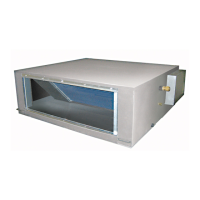Why is my Toshiba Air Conditioner performing poorly?
- JJohn HuynhAug 2, 2025
Poor performance of your Toshiba Air Conditioner can be due to a failure to regularly clean both the indoor and outdoor units.

Why is my Toshiba Air Conditioner performing poorly?
Poor performance of your Toshiba Air Conditioner can be due to a failure to regularly clean both the indoor and outdoor units.
| Type | Split System |
|---|---|
| Voltage | 220-240V |
| Cooling Capacity | 5.0 kW |
| Energy Efficiency Ratio (EER) | 3.21 |
| Coefficient of Performance (COP) | 3.61 |
| Refrigerant | R410A |
| Outdoor Unit Noise Level | 52 dB(A) |
| Power Supply | 1 Phase, 50Hz |
General classification of the product.
Defines who can perform installation and maintenance.
Symbols and their meanings for safety warnings.
General safety guidelines before installation and operation.
Avoids specific locations that can cause damage or malfunction.
Precautions for high humidity environments.
Required clearances for installation and service.
Physical measurements of the unit.
How to configure the filter cleaning notification.
Method for draining water using gravity.
Method for draining water when gravity is not sufficient.
Recommended materials for drain piping.
How to connect the drain pipe.
Dimensions for manufacturing ducts locally.
Limits for refrigerant pipe length and height.
Specifications for refrigerant pipe diameters.
How to connect refrigerant pipes.
Method for flaring refrigerant pipes.
Process of removing air from the refrigerant system.
How to charge the correct amount of refrigerant.
Instructions for opening refrigerant valves.
How to check for refrigerant leaks.
Requirements for wiring materials.
Power supply details for the indoor unit.
How to set up controls on-site.
Identification of the applicable remote controller model.
Step-by-step guide for control setup.
Adjusting settings for duct pressure.
Pre-operation checks before starting the test.
Conditions under which thermostat will turn off.
Steps to perform the test run.
Test run procedure using wired remote.
Test run procedure using wireless remote.
What to do if the test run fails.
Recommendations for regular cleaning and upkeep.
Checks to perform before maintenance.
Initial checks for issues.
How to view past error codes.
List of error codes and their meanings.
Limits for refrigerant gas concentration in rooms.
Sheet for recording indoor unit configuration.
General setup options for indoor units.
Setting external static pressure.
Adjusting the filter cleaning indicator timing.
Adjusting temperature sensor shift.
Notes on installing optional parts.












